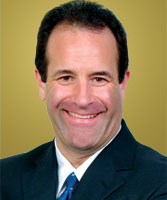 By Jim Peduto By Jim Peduto
Jim Peduto is the president of Matrix Integrated Facility Management and the co-founder of the American Institute for Cleaning Sciences, an independent third-party accreditation organization that establishes standards to improve the professional performance of the cleaning industry. |
Training is the cornerstone of productive and effective cleaning operations. In light of that fact, it is ironic that most training is ineffectively delivered. Employees are rarely instructed in fun and meaningful ways as to why they must follow specific steps or how each step or task applies to the overall organizational mission.
All too often cleaning education consists of lectures in a classroom setting, a video screening, or a live demonstration from a colleague without much discussion or follow-up. Unfortunately, those techniques are not very effective. The National Training Center estimates that adult learners retain just 5 percent of what they hear. Add a video and the retention rate increases to only 20 percent. Even a demonstration has a retention rate of only 30 percent.
What does work? Practice by doing has a retention rate of 75 percent and teaching others results in 90 percent retention.
The most effective training programs require focus on deeper understanding through discussion and hands-on education. The challenge is to achieve all of the above while making learning fun, explaining its relevance and tying it back to your organization’s mission. That said, I am offering the following suggestions:
- Allow employees to enjoy learning. It is OK to use humor when explaining the serious topic of cleaning, including tasteful jokes, cartoons, entertaining video clips, or anecdotal stories. Trainers should try to “guide” learning rather than dominate the discussion with lectures.
- Use examples the general population can relate to. Comparing tasks to those performed at home will help deepen understanding. The statement, “To fill the bucket, you simply attach this hose to the dispenser just like you would a garden hose to a fertilizer dispenser,” provides a visual and audio picture.
- Explain how the task applies to the cleaning mission. Talking through the steps included in cleaning a restroom is much more valuable to the learner when they can understand why each step is required. Include the health and safety elements of each task and how it all aligns with the organization’s mission as well.
- Demonstrate tasks and then supervise trainees as they do them. Adults learn most by doing, discussing and seeing, so this step is crucial. Allow employees to make mistakes and use them as a discussion point. Invite questions and conversation during demonstrations and hands-on learning.
- Repeat and review the curriculum. Revisit key points to emphasize their importance and offer further discussion. Repetition is an important component of adult learning. In most cases, the message needs to be repeated five to seven times for it to “stick.” Your challenge is to keep it fresh.
With this combination of steps, you will no longer be simply providing training. You will be more effectively helping your employees better understand the importance of cleaning. 

 Celebrating BSCAI's 60th Anniversary eBook
Celebrating BSCAI's 60th Anniversary eBook The Down and Dirty on Cleaning in Virus Season
The Down and Dirty on Cleaning in Virus Season How Surfactant Use is Expanding in Commercial Cleaning
How Surfactant Use is Expanding in Commercial Cleaning